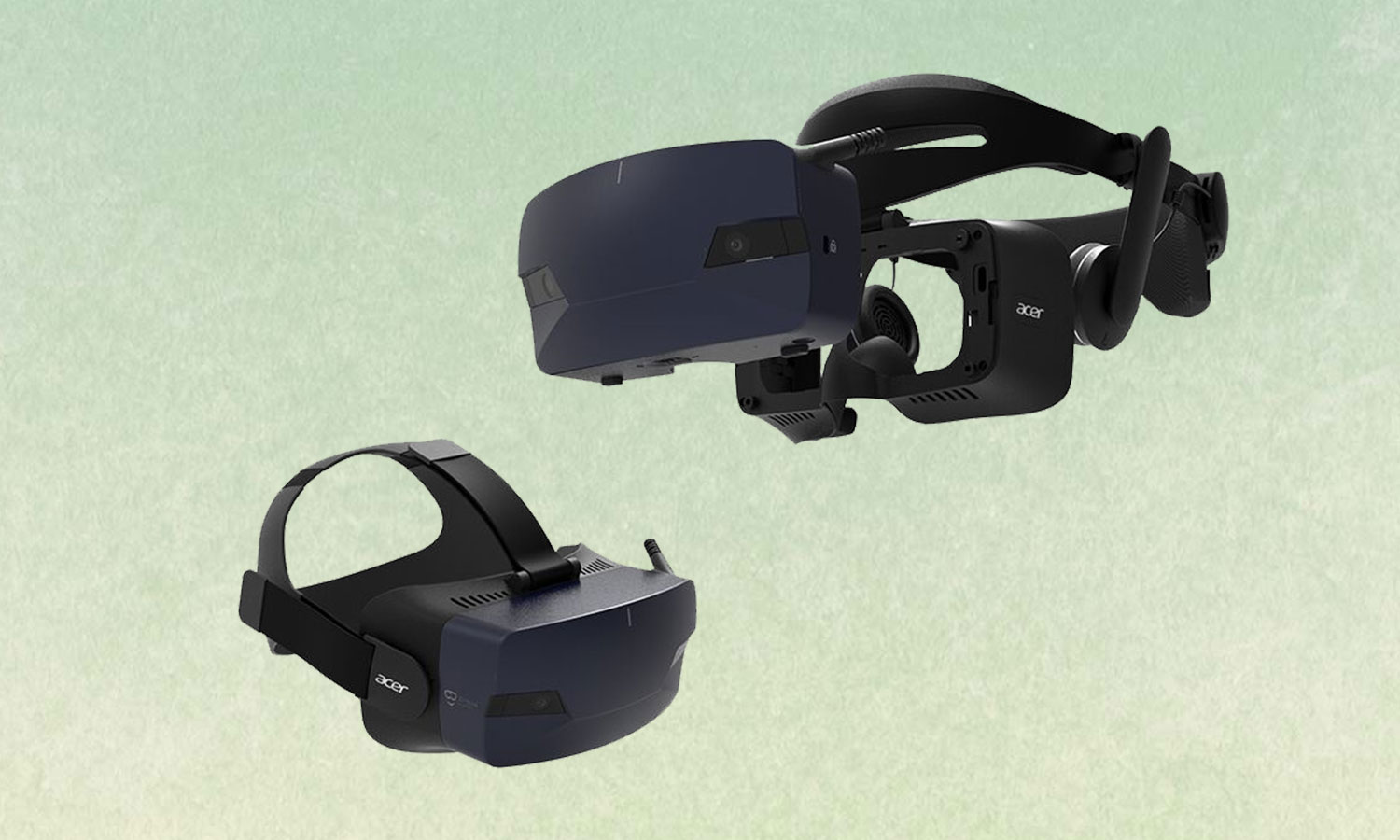Acer Goes Premium With New Windows MR Headset
At a press conference at IFA in Cologne, Germany, Acer revealed its second Windows Mixed Reality headset, the Acer OJO 500. It will start at $399 and should be available in November.
The headset is designed to be easy to clean thanks to a new detachable design. The lens casing and the strap can be removed from the rest of the headset for a quick and easy wipe down. The OJO 500 will come with either a soft or a hard head strap, the former of which can be thrown in the washing machine. Otherwise, the design appears to be a more modernized, professional version of Acer’s original Windows Mixed Reality Headset. It also includes the ability to flip up the visor to talk to others or see the real world, which was included on the company's original headset.
The OJO 500 also adds new features for better visuals and audio. It has an interpupillary distance (IPD) wheel, to adjust the lenses to match the distance between the center of your eyes. Acer is also introducing a smartphone app to measure your IPD distance for an optimal experience and sharper images. (Samsung has an IPD dial on its pricier Windows Mixed Reality headset). The 2.9-inch lenses on the OJO offer a 100-degree field of view, a 90 Hz refresh rate and a resolution of 2880 x 1440. Those specs don't differ much from Acer’s first headset.
There’s also built-in audio, similar to Samsung’s headset. Acer says its system is unique in that it uses a “patented sound pipe” to move sound from the headset’s speakers directly to users’ ears.
Acer’s headset will have a configuration with two motion controllers in the box, though it's not clear if it will also be sold without controllers. The headset, like other Windows Mixed Reality HMDs, has inside-out tracking.
The OJO 500 is entering a competitive market, though. While it undercuts Samsung’s Mixed Reality Headset—widely considered the best of the bunch —by a $100, you can get an Oculus Rift with touch controllers for the same $399 price. Windows Mixed Reality is slowly growing with Steam VR compatibility, while Oculus has a bigger presence in VR gaming both through Steam and on Oculus’ platform.
But for businesses looking to showcase their wares in VR who want their headset to be hygienic between uses, having something that comes apart for easy cleaning may be worth the expense. We hope to go heads-on with the device soon.
Get Tom's Hardware's best news and in-depth reviews, straight to your inbox.

Andrew E. Freedman is a senior editor at Tom's Hardware focusing on laptops, desktops and gaming. He also keeps up with the latest news. A lover of all things gaming and tech, his previous work has shown up in Tom's Guide, Laptop Mag, Kotaku, PCMag and Complex, among others. Follow him on Threads @FreedmanAE and BlueSky @andrewfreedman.net. You can send him tips on Signal: andrewfreedman.01
-
Stephen_144 Why would I consider a VR headset, such as the Rift, as a competing purchase for a Windows MR headset like the one above? Both do what the other can not.Reply -
Brian28 Reply21275504 said:Why would I consider a VR headset, such as the Rift, as a competing purchase for a Windows MR headset like the one above? Both do what the other can not.
The current Windows MR headsets, including Acer and Samsung, are VR headsets, not AR like the Hololens. The MR (Mixed Reality) here refers to the Windows API they support, which handles both VR and AR, even though each headset is only one or the other. (And most of them are only VR.)
The main difference between this Acer and the Rift is the WMR headsets use "inside-out" tracking while the Rift requires several wall-mounted base stations to track. The result is mostly the same, but the Rift requires more physical setup. The Rift might have better tracking in a few edge cases, but WMR has easier setup. -
hdmark Reply21275831 said:21275504 said:Why would I consider a VR headset, such as the Rift, as a competing purchase for a Windows MR headset like the one above? Both do what the other can not.
The current Windows MR headsets, including Acer and Samsung, are VR headsets, not AR like the Hololens. The MR (Mixed Reality) here refers to the Windows API they support, which handles both VR and AR, even though each headset is only one or the other. (And most of them are only VR.)
The main difference between this Acer and the Rift is the WMR headsets use "inside-out" tracking while the Rift requires several wall-mounted base stations to track. The result is mostly the same, but the Rift requires more physical setup. The Rift might have better tracking in a few edge cases, but WMR has easier setup.
not sure , but i think thats what he meant. When i was purchasing my vr headset, it wasnt between the rift and the odyssey, it was between the different MR headsets. I feel a lot of people choose the vive/rift OR a windows MR headset based on the constraints of their play space. at least thats what did it for me, i coudl be off base tho!
